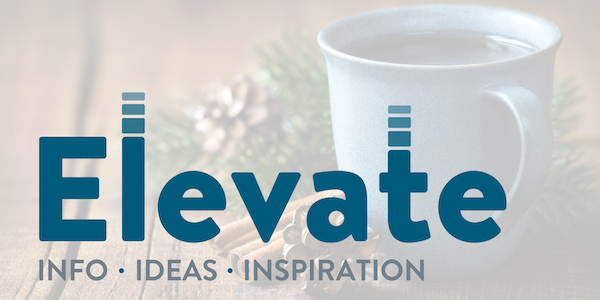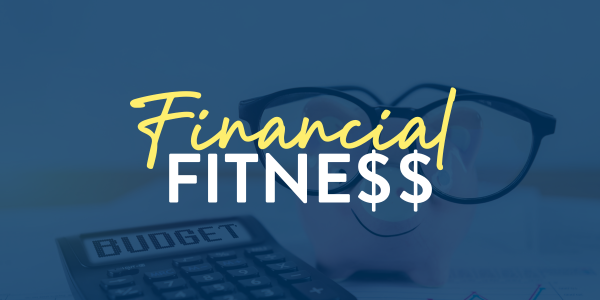
Move-Up Buyers Moonlight as Landlords
In addition to low inventory, the housing market has encountered a newer challenge: rising mortgage rates, which hit 7% recently. This has caused problems for would-be and move-up homebuyers alike.

However, a rising number of move-up buyers are going for a new strategy: retaining their current home, converting it into a rental property while shopping for their next home.
Since rents continue to climb in many areas, these homeowners can effectively turn their current mortgage payments over to their tenants and begin searching for their next home. Many of these new landlords have found that they can charge competitive rent for their current home that's considerably more than the monthly mortgage repayments, increasing their cash flow.
This strategy is especially welcome in communities where Airbnb and VRBO rentals have grown out of favor. Residents are becoming unhappy with the short-term, frequent tenant turnover. When an established homeowner rents their property to a long-term, vetted tenant, this is a more acceptable solution to neighbors.
Renting one's property is also popular with younger buyers, with one twist: the buyer never moves into their new home but continues to rent. These tend to be younger buyers with higher incomes who want to begin building equity but aren't ready to settle down.
Source: Yahoo.com
MORTGAGE IQ
Get More from Your Homeowner's Insurance
While we all hope we won't need to file an insurance claim, things do happen...like storms, falling trees and anti-social pets. Here are some homeowner's coverage facts that you may not be aware of.
You can re-open a claim after your coverage check arrives. Let's say a tree damages your home's roof, your insurance adjuster visits, and you're issued a check to cover the damages. But what if your roof repairer uncovers damage to your heating or plumbing system? Most insurers will re-open the claim if more problems are discovered within 12 months of the initial loss.
Buying a home near a fire department may save you money. Most insurers research the location of your neighborhood fire department when setting your insurance rate. Other factors: whether your fire department is staffed by volunteers or professionals, your community water supply, and if a fire hydrant is nearby.
Man's best friend may not be friends with your insurer. Since most homeowner's policies provide coverage if your dog attacks someone, some breeds are considered "high risk" because of past claims' statistics. Dogs with a high incidence of bite claims include pit bulls, Rottweilers, German Shepherds, and wolf-dog hybrids. However, not all insurance companies prohibit the same breeds. Also, insurers in a few states don't prohibit any dog breed.
Your remodeling project may not be covered. If you're about to add a new room or similar structure to your existing home, call your agent for advice. You may need additional, temporary insurance before completion. Also, your contractors will need to supply details of their own coverage for general liability and worker's comp.
Source: insurancequotes.com
FINANCIAL NEWS
New FICO Model Helps Beginners Build Credit
Recently, the Federal Housing Finance Agency (FHFA) announced the approval of two new credit scoring models: the FICO 10T and the VantageScore 4.0. These will be especially helpful to consumers who are still building a credit profile, including recent high school and college graduates.
Research for these new scoring products resulted in the creation of algorithms to specifically assist consumers with sparse credit histories and "thinner" credit files. The new scoring models reward consumers for histories of on-time rental and utility payments, together with responsible management of cell phone/telecom accounts and vehicle financing. This enables this group to qualify for additional types of credit, such as unsecured revolving credit, to build a stronger FICO score.
In addition, the FICO 10T and VantageScore 4.0 will be more accurate than today's Classic FICO score, as the new payment histories and monitoring methods have gone through extensive testing. This will improve accuracy while expanding the algorithms that credit issuers rely on for determining applicants' ability to repay.
The new models are good news for lenders, too. They're expected to improve safety and soundness in the housing market by providing better risk-calculation methods for first-time buyers.
Source: consumerfinancereport.com
DID YOU KNOW?
Estimating Closing Costs
A down payment and monthly mortgage payment aren't the only costs you're looking at when buying a new home. Some buyers forget that they will also have to pay closing costs.
What Are Closing Costs?
These costs are the fees associated with "closing"—also known as funding or completing—the mortgage loan on your home. These costs include things like the appraisal fee, home inspection fee, underwriting, recording fee, title search, insurance premiums, credit score report, loan origination, transfer tax, application fee, survey, attorney fees, and any discount points.
The exact closing costs and fees vary by person and even by state or city. They will also depend on the sales price of your home.
These costs may be able to be negotiated into the offer to be paid by the seller (sometimes sellers pay closing costs if it means they can stand firm on the home's listing price). You may also be able to finance your closing costs or choose a "no closing cost" loan that covers these fees, but at a higher interest rate.
What Will My Closing Costs Be?
Homebuyers can typically expect their average closing costs to equal between 1% and 3% of the home's purchase price. For example, if the home you're buying costs $300,000, then you can expect to pay between $3,000 and $9,000 in closing costs. Closing costs for an FHA loan are typically between 2% and 6% of your new home's purchase price.
Your lender will provide a loan estimate that outlines what the closing costs will be (based on the type of loan you're applying for) within three days of receiving your loan application. They will also issue a closing disclosure that provides the final details surrounding your mortgage loan, including the closing costs, at least three days before your loan closes.
Can I Pay with a Credit Card?
Unfortunately, you can't pay closing costs with a credit card. What you can do, however, is roll your closing costs into your home loan—if you have an FHA loan. (VA loans are not eligible for this option.) This will mean a slightly higher mortgage payment, but it can be well worth it if you've already stretched your budget to come up with the down payment.
Naturally, you can also pay your closing costs upfront. This is done either through cash (actually a cashier's check) or by taking out a private loan. If you need to get creative, we have written about a few ways you can cover closing costs.
Does a Mortgage Loan Cover Closing Costs?
As mentioned, closing costs can be rolled into a mortgage loan…as long as you have the type of loan that allows for this and there is enough equity based on the appraised value of the home. This is often used in refinances, but with a purchase it's a little trickier. Your Loan Advisor can run the numbers for you and give you some options.
There are also online tools available to help you plan in advance for your closing costs. We offer several online loan calculators, including a "Home Affordability" calculator.
My FICO offers an online tool that has you input the information on your new home, such as appraisal price and property taxes, and then calculates how much you can expect to pay when you close on your new home. Taking a little extra time to put in this information can leave you more prepared down the road.
Knowing what you might expect to pay can help you have a good understanding of the overall home loan process. We can answer any questions you have and help you estimate what your costs may be when you're looking to buy a new home.
PERSONAL FINANCES
Show Inflation Who's Boss
If you're feeling nostalgic for 2021 prices, you're not alone.
The typical American household spent $445 more in September 2022 to buy the same goods and services as they did a year ago. And even though wages increased by 4.9% in the last 12 months, inflation inhaled worker raises by surging over 8%.
While you may have to make a few tough choices, like the ones below, keep in mind that the situation will eventually improve. And, depending on the cost-cutting measures you choose, some may even improve your health and social life.
Since grocery bills are one of inflation's main targets, never shop without a shopping list. And since most grocery store chains post weekly specials online, take a few minutes to surf for deals before you go.
While you may have cut down on drive-through lunches and lattes, did you rethink your at-home dining? For example, if "meatflation" has hit your supermarket, consider the occasional vegetarian meal.
Cancel some monthly subscriptions. These can be anything from streaming channels to magazines to gym memberships. Look at yours and decide what you'll miss the least...at least for a while. You'll also save when you catch up on your reading. If there's nothing interesting on the shelves at home, try ordering second-hand books online, or browsing used bookstores.
If you're a homeowner, you have two more options to reduce monthly costs. If your home's layout is suitable, consider renting out a room to a student or family friend. You can also investigate cancelling your private mortgage insurance (PMI) if you're paying it. If you want to review this option, contact me and I'll walk you through it.
Source: cnbc.com
FOOD
Herb and Apple Stuffing
This easy recipe for Herb and Apple Stuffing combines Granny Smith apples, rosemary, parsley and almonds for a dish that serves 10-12 guests for around $1.15 a person! You may substitute sourdough bread for baguettes if you prefer.
Source: tasteofhome.com
REAL ESTATE TRENDS
Holiday Décor on a Budget
Retro interiors and colors returned earlier this year, and now this winter's holiday themes are incorporating the same feel. Another trend: bringing the outdoors indoors.
Here are some themes to consider when it's time to decorate your living room for family and friends - some store-bought, some from outdoors.
Create an enchanted forest. Botanical-inspired and country cottage décor isn't a new trend for the rest of the year, but it's popping up in craft stores just in time for the holidays. Combine some faux ferns and eucalyptus with traditional pine greenery - you can find this outdoors if your plans don't include a live tree. Children enjoy DIY ornament-making kits, and there are dozens of these in craft stores and online. Add some thrift store finds from decades past and pressed flowers to complete your look.
Choose eco-friendly elements. Over the past years, there's been a greater focus on sustainable products and goods, and it's now inspiring this year's holiday accessories. Some are choosing natural elements that can be composted instead of trashed, such as live pine or orange slices. Also, instead of buying more gift wrap, acquaint yourself with Furoshiki, a traditional form of Japanese gift wrapping, and use fabric from your local thrift shop or the back of your closet.
Emphasize emerald. Even though holiday trees bring green indoors, many stores are producing a variety of items in dark, dramatic emerald. Since green evokes a feeling of abundance, rest and security, it's ideal if you're inviting family members to a holiday meal. From flocked deer to tree decorations to velvet pillows, you can bring this soothing color indoors. You can go for a monochrome look or combine items with a solo secondary color, such as metallic silver or gold.
Source: thediymommy.com







